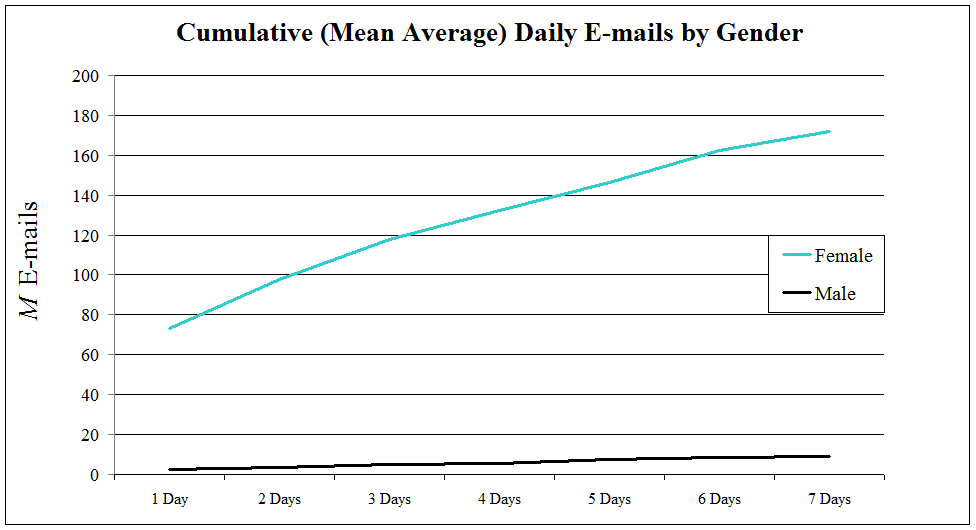
Conference Presentation:
Marelich, W. D., Grandfield, E., Graham, J., Warstadt, M., & Rodriguez, A. (2012). Initial contact on dating websites: Results and strategies from the L.U.R.E. Project. Poster presented at the annual meeting of the Association for Psychological Science, Chicago, IL.
Abstract
Characteristics in online dating profiles that lead to initial contact were investigated. Across multiple dating websites/cities over rolling 7-day periods, findings revealed profile attractiveness and a casual dating status increased initial contacts for female profiles, while unique/exotic profile characteristics increased contacts for males.
Background
The current research explored characteristics in online dating profiles that lead to initial contact. Dating websites have been a growth area since the onset of the Internet in the 1990’s, with over 20 million people visiting dating websites monthly (Online Dating Magazine, 2011).
Research evaluating online dating interactions have provided findings similar to those in “live” dating settings (e.g., a preference for individuals who are more attractive than themselves with high-incomes, similar education levels/personalities, men’s preference for younger mates, and women’s preference for older mates; Hitsch, Hortascu, & Ariely, 2010).
What characteristics in an online profile lead or “lure” someone to initiate contact? We believe contact initiation is driven by a number of factors. These include:
(a) basic attraction characteristics from reflecting Social Exchange Theory (e.g., physical beauty, social status)
(b) males’ role to pursue females (suggesting males will initiate contact) as supported through Evolutionary Psychology (e.g., Buss, 1994)
(c) profiles which are unique, reflecting Optimal Distinctiveness Theory (Timmor & Katz-Navon, 2008).
Method: The L.U.R.E. Project
The L.U.R.E. project (L.U.R.E. -- Latent Unbosomed Relational Elements) began in 2011 to evaluate online dating and initial contact characteristics.
Data here were taken from 49 posted profiles on 6 online dating websites, with postings made in 10 large U.S. cities on a rolling basis.
Dating profiles were constructed with pictures from public domain resources, and varied by gender, picture attraction, personal demographics/characteristics, and sexual proclivity. Pictures were also repeated, altering profiles to investigate changes in initial contact based on various profile characteristics.
Profiles were posted for 7 days then removed, and counts were made of initial e-mail contacts (e-mails were never opened, nor were winks, views, flirts, or cybergifts). IRB approval was obtained for the study methods.
Results
-The mean number of initial contact e-mails over the 7-day period was 30.08, with most received the first few days of posting.
-For gender, a large discrepancy in contacts was noted, with females receiving an average of 54.62 e-mails vs. males who received an average of 2.35 (t[47] = 3.13, p = .003).
-For both men/women, age had little diminishing effect on initial contacts.
-Female profiles noting cavalier sexual attitudes received more e-mails than those with more typical or mundane sexual interests.
-For Women: As profile attractiveness diminished, so did the number of initial contact e-mails (no changes were noted for males).
-For Women: An intense number of e-mails were received the first 3 days of postings, which then level through the remainder of days listed.
-For Men: Higher SES and/or high-end career (e.g., earning 150k per year; career in Finance) had no effect on contacts. However, more unique male profiles/career (e.g., an exotic job such as “rodeo clown”) showed an increase in average e-mails compared to more standard or mundane profiles (mean average of 3.85 vs. 0.40 contacts).
-Casual vs. Long-Term Relationship preference: Using loglinear analysis, we investigated the effects of casual vs. long-term relationship postings on the number of e-mails received and attractiveness of the profile picture. After fitting a loglinear model, we found postings noting casual sex preference led to greater e-mails received. Though done in aggregate, since so few e-mails were received for male profiles, this finding should only be applied to female profiles.


Discussion
Characteristics that lure initial contact on dating websites have much in common with those noted in “live” dating situations for women, but not for men.
Our findings suggest that both Evolutionary Psychology theory and Optimal Distinctiveness Theory (the latter especially for male profiles) may be applied to explain these findings. Social Exchange Theory as well could be applied to explain findings for female profiles, but exchange characteristics had no impact on male profile contact.
Recommendations For On-Line Daters to Increase Initial Contact
Online Posting Strategies for Men:
- Consider creating a unique profile - something that stands out from the standard listings
- If no one is contacting you (likely!), take the initiative and be very active in contacting females
- "Posting" a mundane profile then "waiting" for someone to initiate contact with you is a very poor strategy and will result in almost no interaction, regardless of financial status and attractiveness
Online Posting Strategies for Women:
- Post your most attractive facial photo
- Noting an interest in causal dating will yield more initial contact, even though your overall goal may be a long-term relationship
- Suggesting more cavalier sexual attitudes will yield greater initial contact
- Be prepared for a frenzy of initial e-mail contacts your first 3 days of posting
References:
Buss, D. M. (1994). The evolution of desire: Strategies of human mating. NY: Harper Collins.
Hirsch, G. J., Hortacsu, A., & Ariely, D. (2010). What makes you click? Mate preferences in online dating. Quantitative Marketing and Economics, 8, 393-427.
Online Dating Magazine (2011). Online dating magazine media center: Online dating fact sheet. Retrieved 3/30/2011 from http://www.onlinedatingmagazine.com/mediacenter/onlinedatingfacts.html
Timmor, Y., & Katz-Navon, T. (2008). Being the same and different: A model explaining new product adoption. Journal of Consumer Research, 7, 249-262.